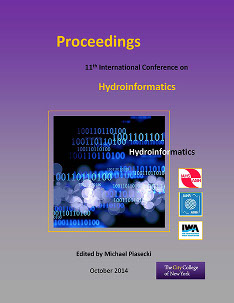Document Type
Presentation
Publication Date
8-1-2014
Abstract
With steep slope and strong rainfall intensity, landslide and debris flow could generate huge amount of sediment yield from the watershed, typically during typhoon floods in Taiwan. As such huge amount of sediment moved into a reservoir, serious sedimentation problem reduced storage of reservoir due to decrease of flow velocity and without sufficient sediment releasing bottom outlet. As a result, using flood discharge to release sediment during Typhoon or rain fall duration is very important. This study adopts the data of field observation from outlet structures of the Shihmen reservoir to establish the operational strategies of sediment releasing rule and keep water sustained supply at downstream river intake. Based on the numerical simulation by using 1-D and 2-D models, the relationship of sediment concentration between the Shihmen reservoir and downstream withdraw intake at the YuanShan weir can be established. The sediment concentration reduction ratio is calculated to be 89% from the Shihmen reservoir to the YuanShan weir. This study also focuses on the sediment concentration mitigation influence of tunnel spillway due to the high sediment concentration releasing from bottom outlet. From simulated results, when the extra discharge of tunnel spillway reaches 830m3/s for specific event, the influence of reducing sediment concentration to downstream river by tunnel spillway can maintain water supply of downstream withdraw intake at YuanShan weir. In practice, when using the extra discharge of tunnel spillway to reduce sediment concentration during Typhoon Haitang and Typhoon Wipha, the sediment concentration at YuanShan weir can reduce water turbidity lower than 6000NTU that water treatment plant can deal with.



Comments
Session R61, Reservoir Operations and Management II